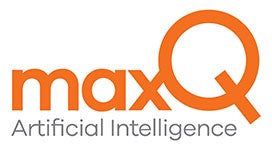
MaxQ-AI: Retrospective Collection of Non-Contrast Head CT images for Clinical Evaluation of MaxQ-AI Accipio Family Software
Supported by: MaxQ AI Pharmaceuticals
Principal Investigator at BMC: Courtney Takahashi, MD
Primary Research Contact: Brandon Finn, BA (617-638-8650)
Summary
Intracranial hemorrhage can be life-threatening. Given the intrinsic inaccessibility of the central nervous system, clinicians must rely on radiological scanning techniques such as computed tomography (CT) or magnetic resonance imaging (MRI) to detect and diagnose intracranial bleeding. While reading accuracy of expert neuroradiologists tends to be high, such expertise is often not immediately available in acute care settings and initial assessment is left to physicians trained in emergency medicine or non-neuroradiologists. In these populations, error rates tend to be higher. Given the potential severity of damage stemming from aICH, methods to increase a clinician's ability to recognize such a condition would significantly improve patient outcomes and lower health care costs. Computer assisted detection (CAD) devices offer a potential means of assisting physicians in reviewing head CT scans by identifying potential areas of aICH through pattern recognition and algorithmic data analysis.
Given the potential usefulness of such technology, MaxQ-AI has developed the Accipio family of software devices, designed to identify and in some implementations, annotate, aICH. This retrospective image collection study is designed to obtain images and subject data to test these devices. The primary objective of this retrospective image collection study is to obtain study image data in order to establish and document ground truth for each subject. This study will create a library of image data that will be used for retrospective reader studies and standalone testing.
Enrollment Criteria
Inclusion Criteria:
- Male or female
- Age ≥18 years
- Subject underwent non-contrast CT exam
- Image series meets predefined image quality and technical criteria
Exclusion Criteria:
- Subject with findings of open cranium injury or bone fragments or foreign bodies in the intracranial space
- Subject with visible or otherwise reported evidence of previous neurosurgery or intracranial implant
- Subject with visible evidence of recent contrast imaging
- Slice thickness <1 mm and >6 mm
- CT peak tube voltage >120 kVp
Status: Pending data analysis
